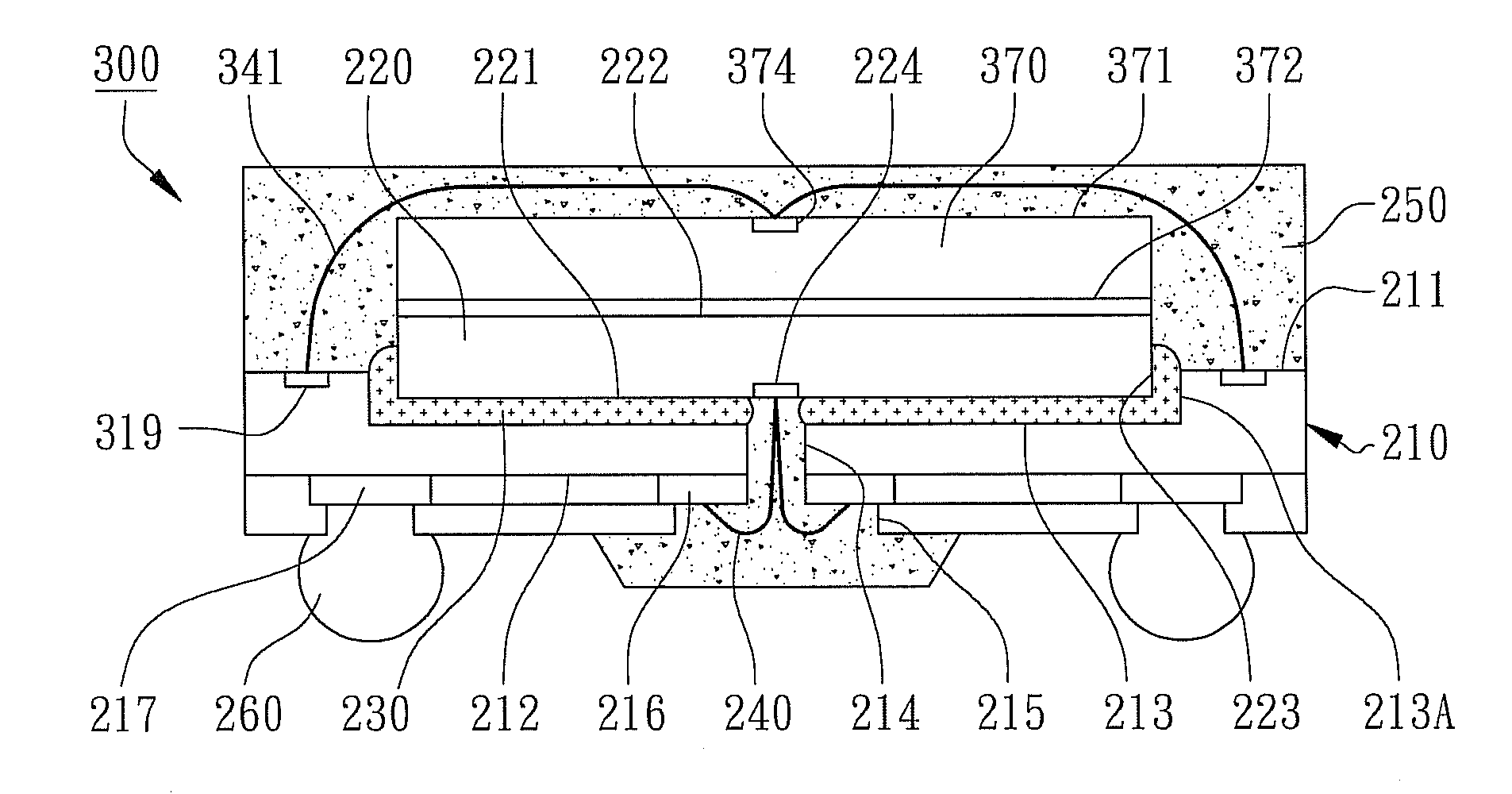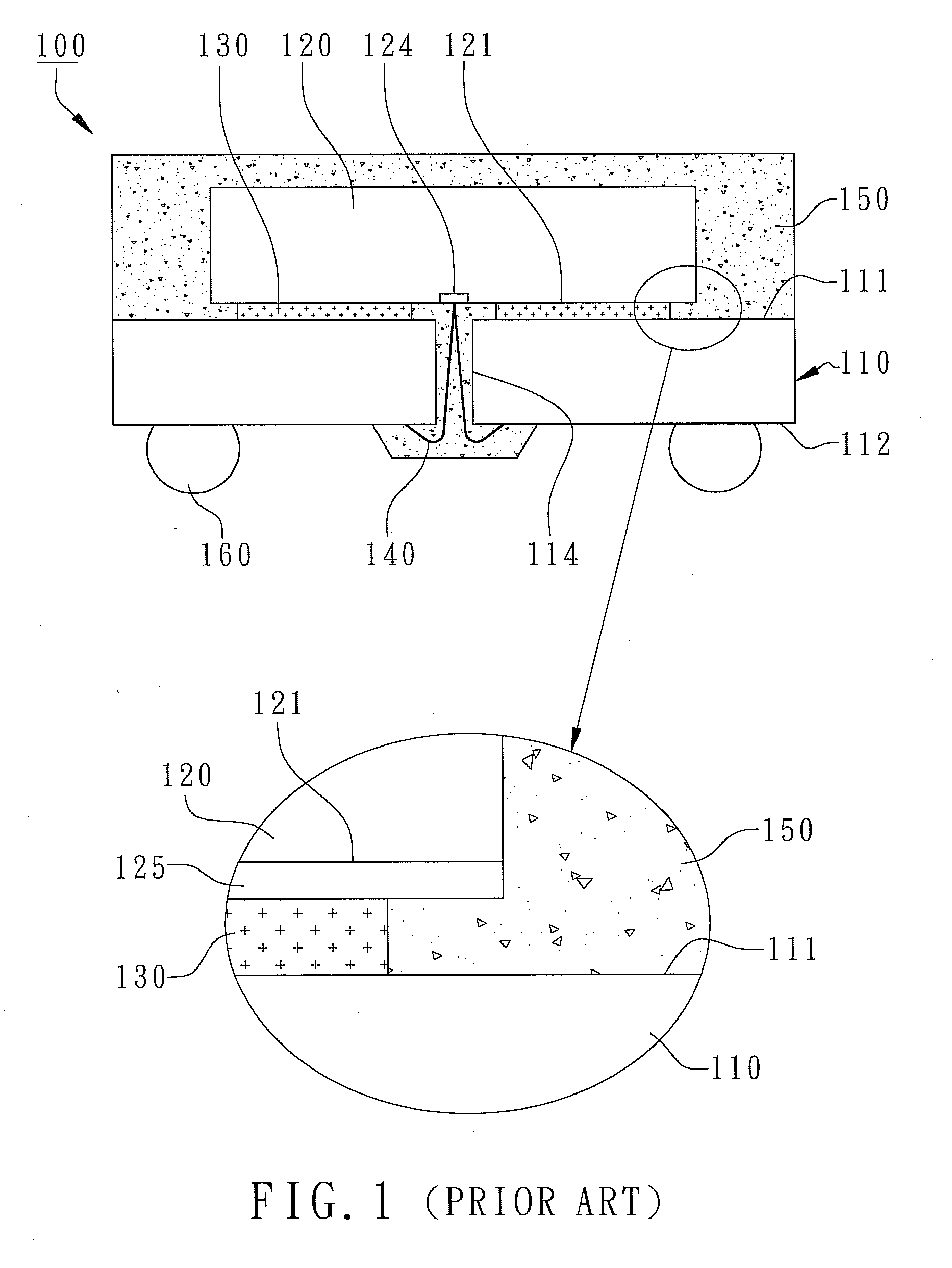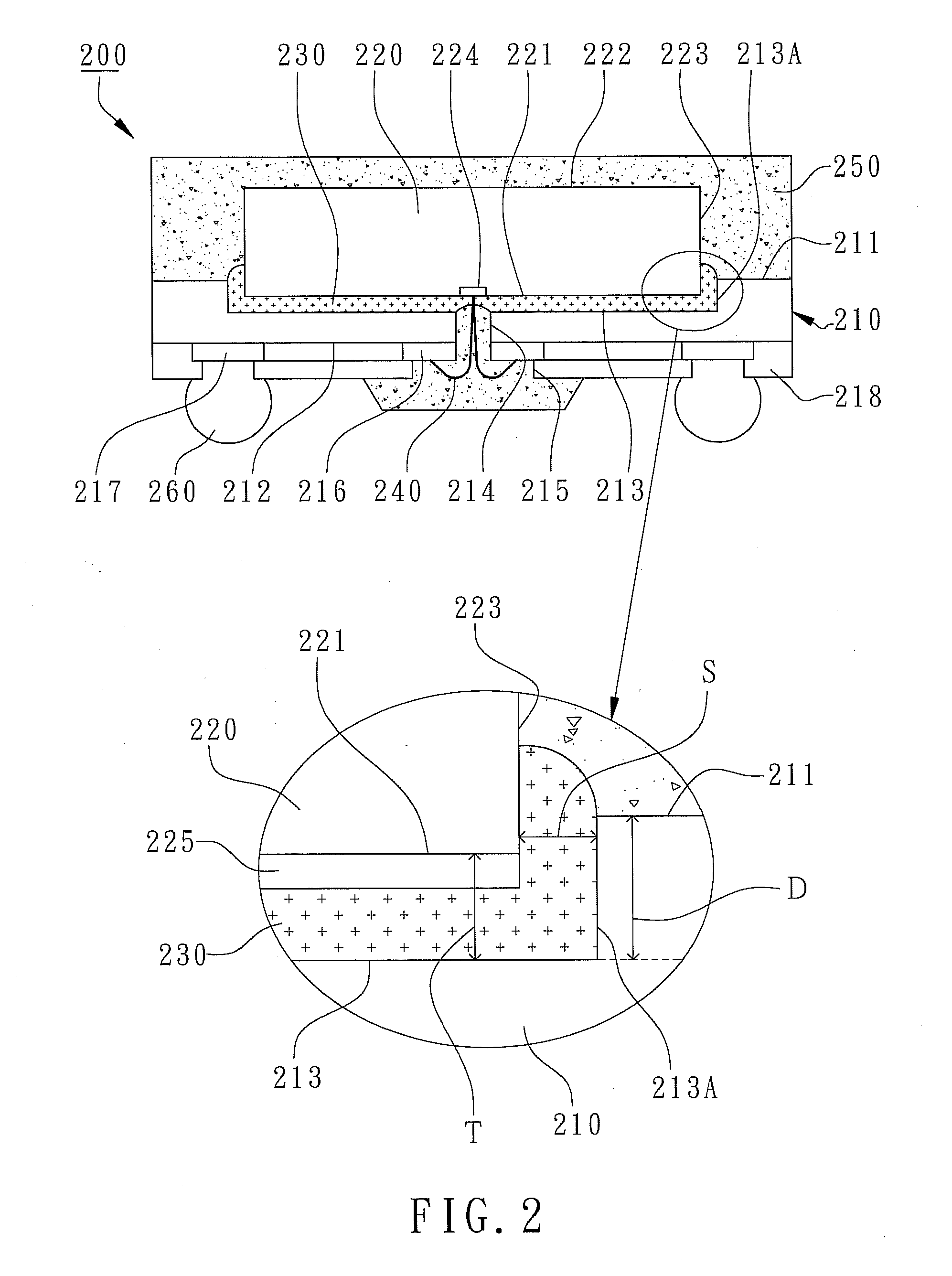Window bga semiconductor package
a technology of window bga and semiconductors, applied in semiconductor devices, semiconductor/solid-state device details, electrical devices, etc., can solve the problems of affecting the reliability and quality of the conventional wbga semiconductor package, wire bonding failure, etc., to reduce the variety of chips, prevent contamination of the second bonding finger, and reduce manufacturing and management costs
- Summary
- Abstract
- Description
- Claims
- Application Information
AI Technical Summary
Benefits of technology
Problems solved by technology
Method used
Image
Examples
Embodiment Construction
[0017]Please refer to the attached drawings, the present invention is described by means of embodiments below.
[0018]According to the first embodiment of the present invention, a WBGA semiconductor package 200 is illustrated in a cross-sectional view including a partially enlarged cross-sectional view of FIG. 2.
[0019]As shown in FIG. 2, the WBGA semiconductor package 200 primarily comprises a substrate 210, a first chip 220, a chip-bonding adhesive 230, a plurality of first bonding wires 240, an encapsulant 250, and a plurality of external terminals 260. The substrate 210 has an internal surface 211, an external surface 212, a depression 213 formed in the internal surface 211, and a slot 214 penetrating from the external surface 212 to the depression 213. The internal surface 211 is the surface of the substrate 210 without exposing from the encapsulant 250 for disposing the first chip 220 where the external surface 212 is the surface of the substrate 210 exposing from the encapsulant...
PUM
 Login to View More
Login to View More Abstract
Description
Claims
Application Information
 Login to View More
Login to View More - R&D
- Intellectual Property
- Life Sciences
- Materials
- Tech Scout
- Unparalleled Data Quality
- Higher Quality Content
- 60% Fewer Hallucinations
Browse by: Latest US Patents, China's latest patents, Technical Efficacy Thesaurus, Application Domain, Technology Topic, Popular Technical Reports.
© 2025 PatSnap. All rights reserved.Legal|Privacy policy|Modern Slavery Act Transparency Statement|Sitemap|About US| Contact US: help@patsnap.com



